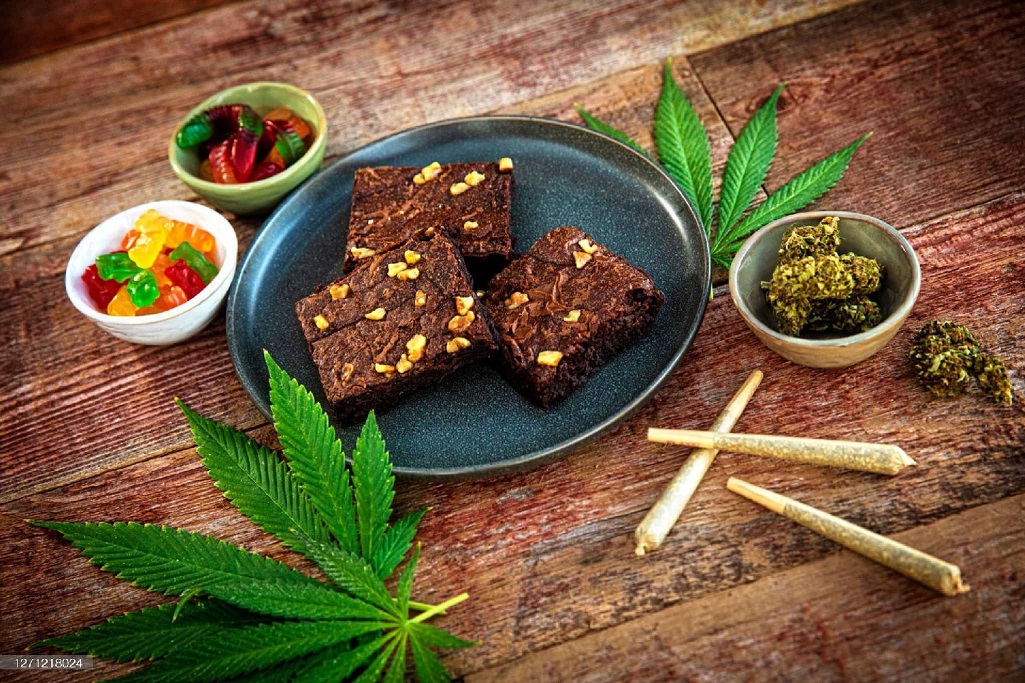The world of cannabis consumption has evolved significantly over the years, offering users various methods to experience the effects of this versatile plant. Two of the most common ways to consume cannabis are smoking and consuming edibles. While both methods deliver the sought-after high, they do so in noticeably different ways. This disparity can be attributed to the distinct metabolic pathways and chemical processes that occur when cannabis is ingested versus when it is smoked. In this article, we will delve into the science behind these differences, exploring why edibles provide a unique high compared to smoking.
Metabolic Pathways: Ingestion vs. Inhalation
When cannabis is smoked, its active compounds, such as delta-9-tetrahydrocannabinol (THC) and cannabidiol (CBD), are rapidly absorbed through the lungs and enter the bloodstream. This quick absorption leads to a fast onset of effects, typically within minutes, which is why smoking is known for producing an almost immediate high. On the other hand, consuming edibles involves a more intricate journey through the digestive system.
Edibles, often infused with cannabis extracts or oils, are broken down in the stomach and then metabolized in the liver. During this process, the cannabinoids are transformed into different compounds, including a more potent form of THC called 11-hydroxy-THC. This metabolite is able to cross the blood-brain barrier more effectively than THC itself, resulting in a more intense and prolonged high. The time it takes for edibles to take effect is longer, usually ranging from 30 minutes to two hours, as the cannabinoids must be digested and metabolized before entering the bloodstream.
Duration and Intensity of Effects
One of the primary differences between the high from smoking and the high from edibles is the duration of effects. Smoking cannabis produces a relatively short-lived high, typically lasting around 1 to 3 hours, depending on the strain and individual factors. This rapid decline in effects is due to the quick elimination of THC and other cannabinoids from the body.
In contrast, the high from edibles tends to last much longer, often extending to 4 to 8 hours or more. The extended duration is a result of the slow release of cannabinoids from the liver into the bloodstream. Additionally, the conversion of THC into 11-hydroxy-THC during digestion contributes to the prolonged and potent effects experienced with edibles.
Subjective Experience
The differences in the high produced by smoking versus consuming edibles also lead to variations in the subjective experience. Smoking cannabis is known for its almost immediate onset of euphoria and relaxation, making it a popular choice for those seeking rapid relief from stress or pain. The effects are often described as more “heady” or “uplifting,” making smoking suitable for social situations or creative endeavors.
On the other hand, the edible high is often characterized by a gradual and intense onset. Users may report feeling a deeper body relaxation and a stronger sense of being “stoned.” This can sometimes lead to feelings of lethargy or even anxiety, especially for inexperienced users who might consume too much, as the delayed onset can make it challenging to gauge the appropriate dosage.
Bioavailability and Dosage Considerations
Another critical aspect contributing to the differences between smoking and edibles is bioavailability. Bioavailability refers to the proportion of a substance that enters circulation when introduced into the body and becomes available to produce effects. When cannabis is smoked, a significant portion of the cannabinoids reaches the bloodstream, resulting in higher bioavailability. This is why the effects of smoking are felt so quickly and intensely.
In contrast, the bioavailability of cannabinoids in edibles is lower due to the complex process of digestion and metabolism. Not all of the cannabinoids in the edible will make it into the bloodstream, and factors such as individual metabolism, the presence of food in the stomach, and the type of edible consumed can further influence bioavailability. This makes dosing with edibles more challenging and emphasizes the importance of patience and caution to avoid overconsumption.
Conclusion
The distinct highs produced by smoking cannabis and consuming edibles can be attributed to the differences in metabolic pathways, onset time, duration of effects, and bioavailability. Both methods offer unique experiences, catering to different preferences and situations. Smoking provides a rapid and immediate high that is often more cerebral and sociable, while edibles offer a slower, more intense body-focused high that is known for its long-lasting effects. As the cannabis industry continues to grow and evolve, understanding these differences allows individuals to make informed choices about their preferred method of consumption and dosage, ensuring a safe and enjoyable experience.




